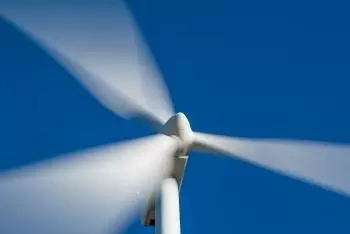
Wind energy is a renewable energy source often complemented by photovoltaic solar energy to generate electricity.
The advantages of generating electricity from wind are greatly helping its growth and implementation in many countries. However, some of the disadvantages that it has discouraged its implementation under certain conditions.
Wind energy is one of the fastest-growing renewable energy sources in the United States. This energy source takes advantage of the wind's kinetic energy to drive an electric generator and produce a considerable amount of electricity.
This article analyzes the major pros and cons of how wind energy produces electricity.
Next, we expose the main advantages and disadvantages of wind energy involved in producing electrical energy.
Advantages of wind energy
The main benefits of this energy source are:
1. It is a renewable energy
Wind power is an inexhaustible energy source since taking advantage of the wind does not imply that it ends. For this reason, this type of energy is considered a renewable energy source.
2. Respectful of the environment
Wind energy is considered clean energy that does not emit polluting particles, as with thermal power plants that use fossil fuels. Therefore, it helps in reducing the consumption of natural gas and coal.
Using this renewable energy does not contribute to the greenhouse effect or global warming of the Earth since it does not emit greenhouse gases. Furthermore, due to the absence of polluting residues, wind energy does not alter aquifers' composition in the area.
3. Low danger of accidents
Wind generators do not present any danger or cause harm to people.
Especially if we compare it with nuclear energy, the consequences for the population are grave in the event of an atomic accident.
4. Energy autonomy in rural areas
It is helpful in rural areas because there is wind practically everywhere. As with solar energy, this means that each region does not need to import energy from other countries or fuel to generate it.
5. Easy installation and removal
A wind farm is much easier to install and uninstall than a hydroelectric plant or a thermoelectric plant (coal or nuclear).
6. Cost-effective
The cost of producing electricity per kilowatt using the force of the wind is low compared to other energy sources. In the economic sense, in many cases, it can compete with coal and even nuclear energy. In addition, the initial investment is much less than a steam power plant.
7. Compatibility with other activities
Because installing wind turbines uses a reduced surface of the soil at its base, it allows the installation of a wind farm to be compatible with other activities such as agriculture and livestock.
In the case of offshore wind turbines, the visual impact is minimized.
Disadvantages of wind energy
The installation of a wind farm has some disadvantages that, in some cases, can make the project unviable.
1. Intermittence
The energy obtained depends on the force of the wind, which is variable. Therefore, if you want to plan future electricity production, it can only be done statistically.
2. Storage difficulty
In large wind farms, it is not feasible to store the energy generated. Therefore, the energy must be consumed immediately.
3. Limitation on wind intensity
Wind turbines can only operate at wind speeds between 10 and 40 km / h.
If the wind speed is less than 10 km / h, the wind turbine operation is not profitable. On the other hand, at speeds above 40 km / h, the windmill must be stopped for safety reasons. put
4. Cost of energy transport infrastructure
Usually, the location of wind farms is chosen based on meteorological criteria. Unfortunately, this implies that often we have to build long transmission lines. These extensive facilities, in addition to the economic cost, mean energy loss.
One drawback of wind power is that many wind turbines must be installed for a wind farm to be profitable. It happens because the windmill blades' ratio of kilowatt obtained per swept area is low.
5. Visual impact
The construction of wind farms has an aesthetic impact on the landscape. However, the need to search for windy locations means that windmills are installed in open and elevated areas and therefore have the disadvantage of being highly visible.
6. Acoustic impact
Running wind turbines are noisy since the mechanical movement and the blades hitting the wind emit sound.
7. Environmental impact
In the environmental context, many birds and bats collide with the rotating blades in mid-flight, causing their death.
Although the angular velocity of the mills is not very high, the linear speed of the tips is enormous.